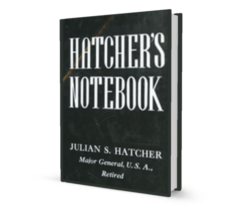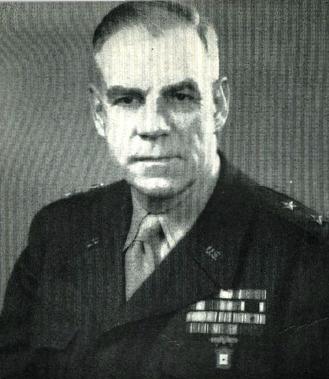
Julian S. Hatcher served in the U.S. Army for 41 years. He was a well qualified arms expert, and pioneered the development of numerous gun improvements. His book deserves to be on the shelf of everyone who is serious about firearms. 
Although this an older book, it is still is a, “Standard reference book for shooters, gunsmiths, ballisticians, historians, hunters, and collectors.”
Hatcher’s Notebook 2nd edition is divided into two parts that are jam-packed full of information.
Part 1
The first two chapters of this section give a history of the classic Springfield and Enfield rifles. There is much detailed information here about the development and use of these classic guns. From these rifles he then moves on into a brief history of the .30-06 gun and the M1 and M2 cartridges. Next is a whole chapter dedicated to machine guns and their development.
Have you ever wondered what happens when a rifle barrel gets obstructed? This is covered in detail with personal stories given from experiments and various events witnessed. He covers handguns to rifles, and even talks about machine gun barrel obstructions.
There is so much in this book that he covers, I could spend a whole day just trying to cover it all. Topics from triggers and ammunition, to bullet lubricants and ballistics charts and data. I will just mention one last chapter before I move on, and that is the chapter on the Pedersen device.
This chapter is worth the price of the book alone.
What was the Pedersen device? For many years the War Department kept its existence a profound secret. When the Pedersen device was first unveiled, it was shown only to a small handful of high officials in the War Department.
Mr. Pedersen began his demonstration by firing a regular Springfield rifle which he had brought with him. After firing a few shots in the ordinary way, he suddenly jerked the bolt out of the rifle and inserted his new device in place of the standard bolt. He began firing rapidly like a machine gun, and within just a few seconds had emptied a entire 40 round clip! With a Springfield rifle and Mr. Pendersen’s new invention, a soldier could now have a low-powered machine gun for battlefield use.
Hatchers Notebook includes pictures and break-down photos of the Pedersen device.
Part 2
The 2nd edition of Hatcher’s Notebook includes four new chapters covering many updated and interesting topics. The first new chapter update is filled with information on new primers, guns, and cartridges.
The second chapter covers explosions and powder fires, as well as the behavior of ammunition when it is exploded accidentally, or otherwise, while it is not in a gun. The information gathered from his experiments with these things has provided us with a invaluable authoritative reference that we can refer to for answers to these important questions.
The third added chapter to Hatcher’s Notebook covers the interesting question of, “What happens when a bullet is fired straight up.” Many experimenters have fired bullets vertically upwards and tried to note their return to earth; but in most instances such bullets simply disappear into the wild blue yonder and no sign of their return is ever detected. The reason is explained here and well documented by the results from official tests done by U.S. Ordnance Department.
The fourth and last added chapter to the book is on the subject of exterior ballistics. Packaged here in a handy reference format are answers to common questions like, “how far will a bullet drop below the line of departure at various ranges.” This chapter is a invaluable reference for handloaders, ballistics experts, or anyone desiring to know more about the characteristics of bullets in flight.
Get this book on the Gun Warrior’s Bible!

